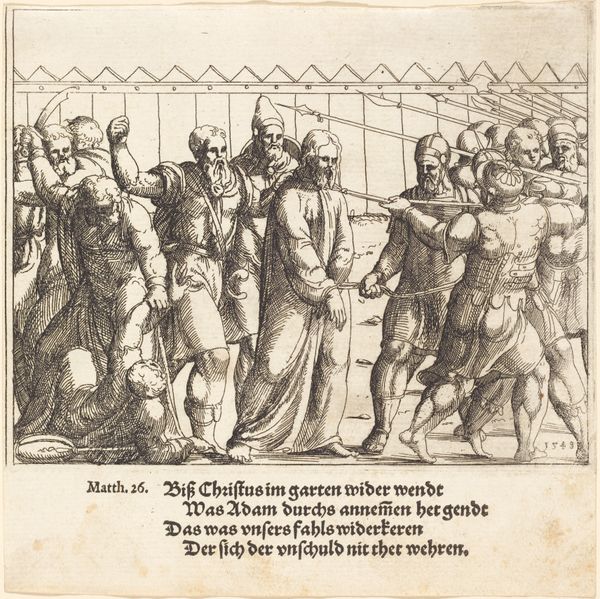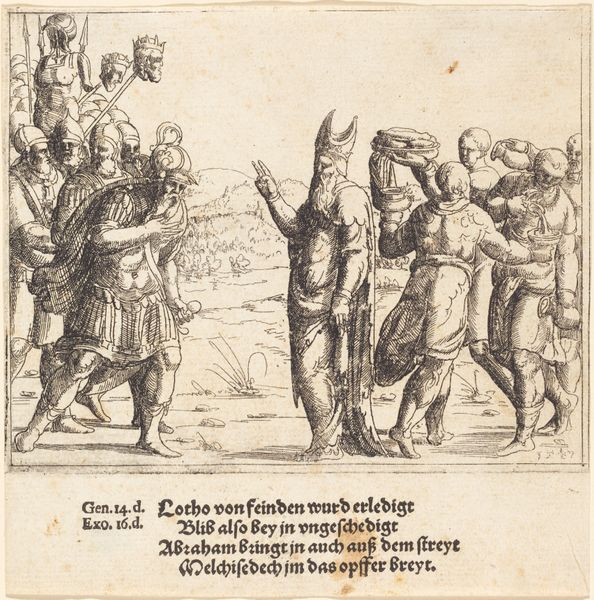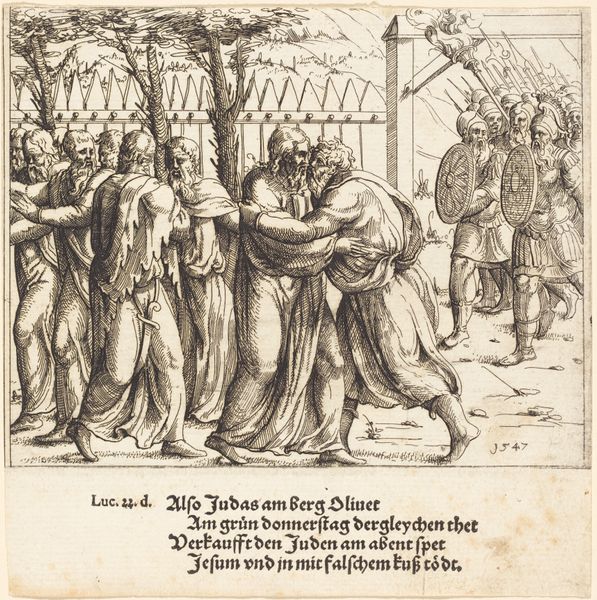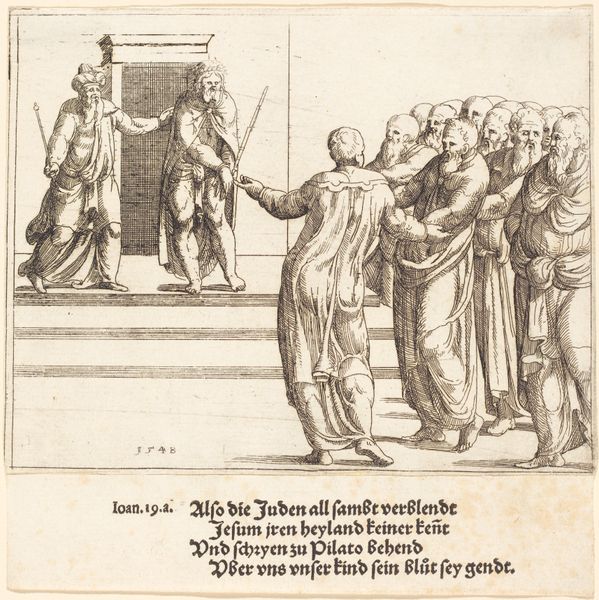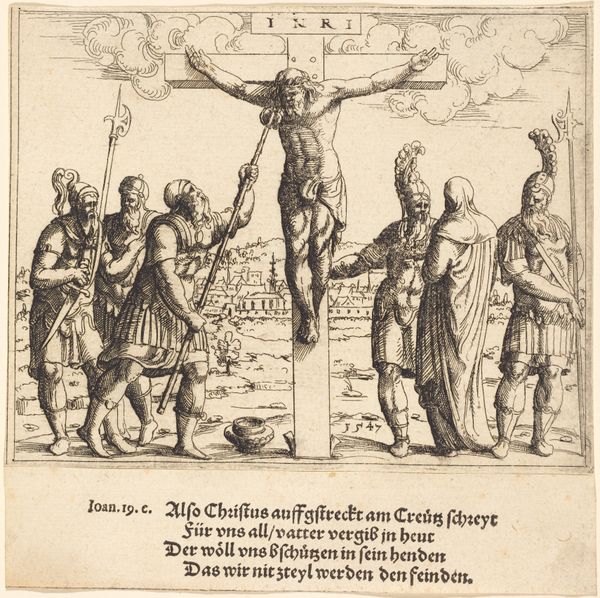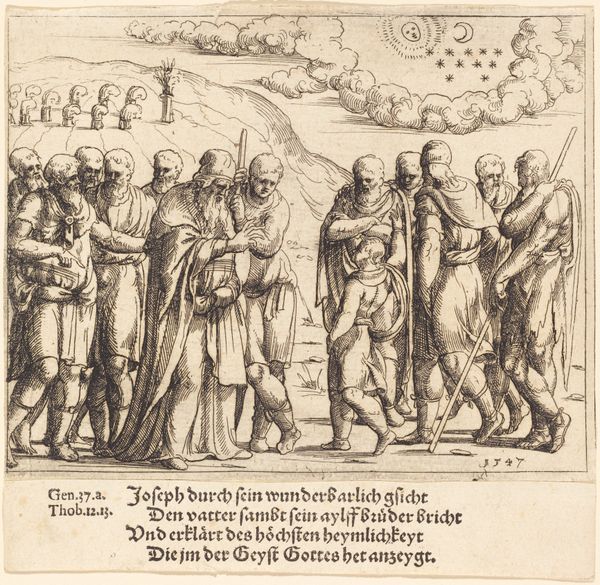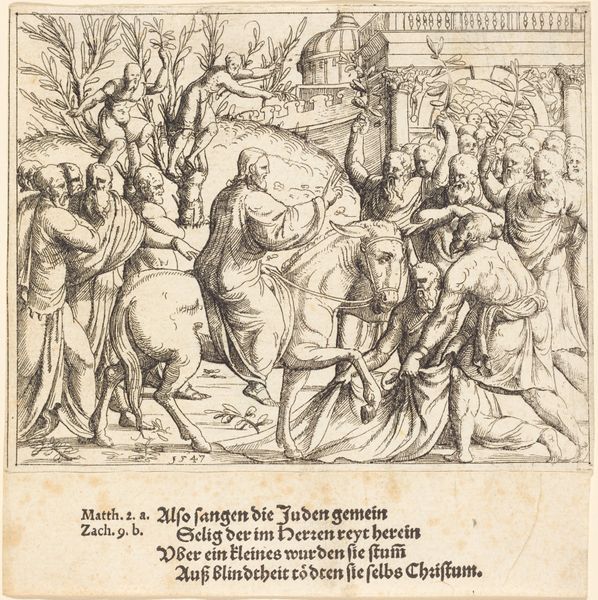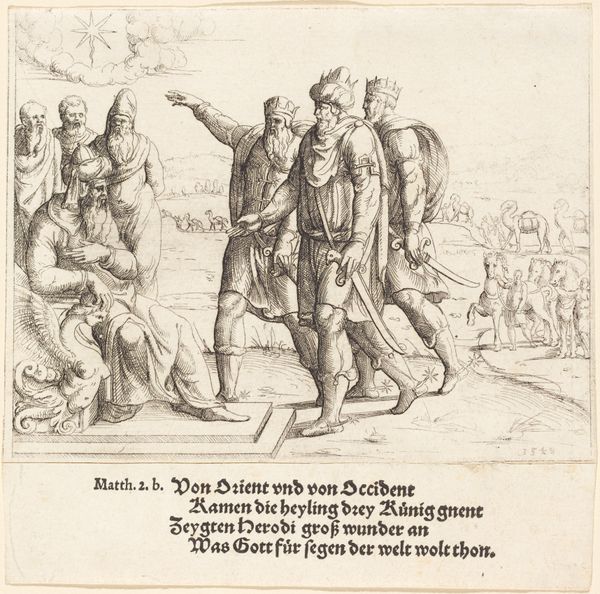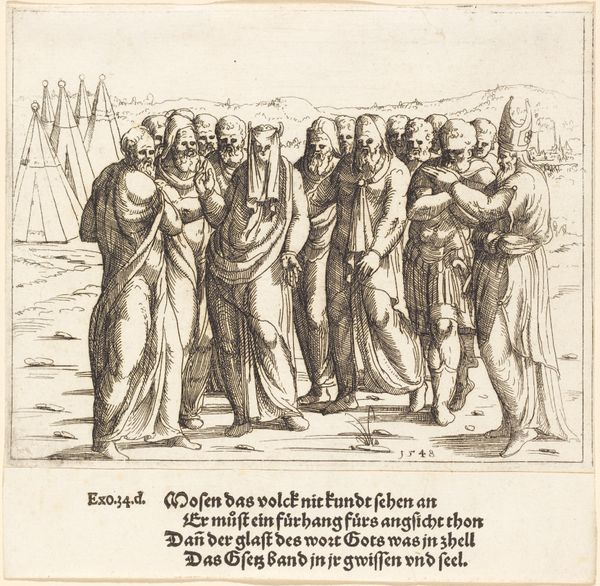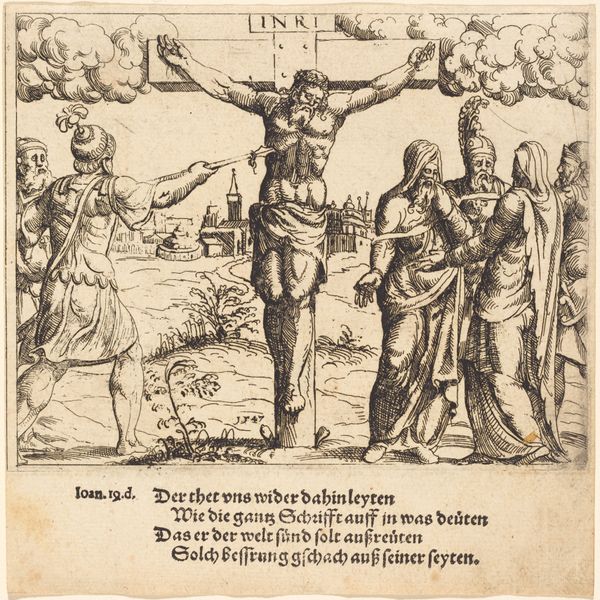
print, engraving
# print
#
figuration
#
11_renaissance
#
history-painting
#
northern-renaissance
#
engraving
Copyright: National Gallery of Art: CC0 1.0
Augustin Hirschvogel created this engraving of "The Flagellation" sometime in the 16th century. Here, the image is dominated by the brutal act of flogging. We see Christ bound to a pillar, surrounded by tormentors wielding whips. The pillar and the whips are not mere objects but powerful symbols of oppression and suffering, resonating with the collective memory of persecution. The act of flagellation itself can be traced back through various cultures, from ancient Roman punishments to religious mortifications. Think of the ecstatic flagellants of the Middle Ages, who whipped themselves into states of religious fervor. The gesture speaks to a deep human impulse, a primal desire to cleanse or purify through pain. Consider how such a scene, charged with violent emotion, taps into the viewer's subconscious, stirring feelings of both empathy and fear. The image is a potent reminder of the cyclical nature of human cruelty, forever imprinted in our cultural consciousness. The motifs of torture and sacrifice resurface time and again.
Comments
No comments
Be the first to comment and join the conversation on the ultimate creative platform.
